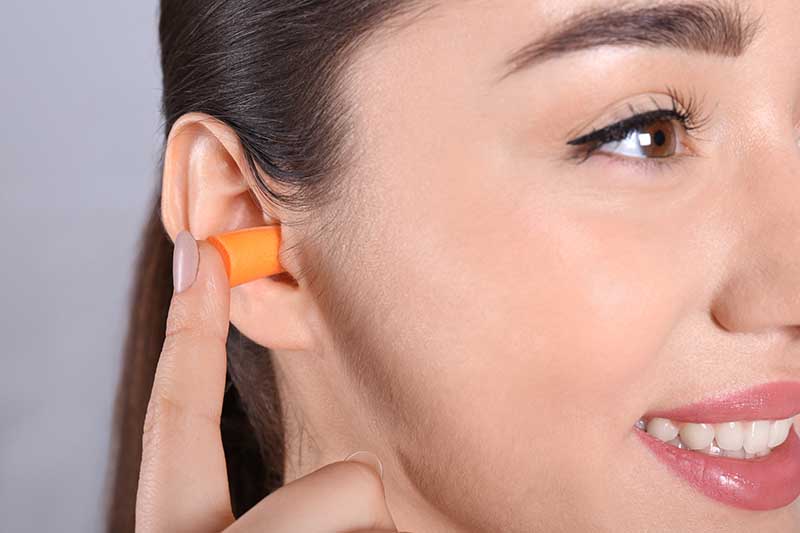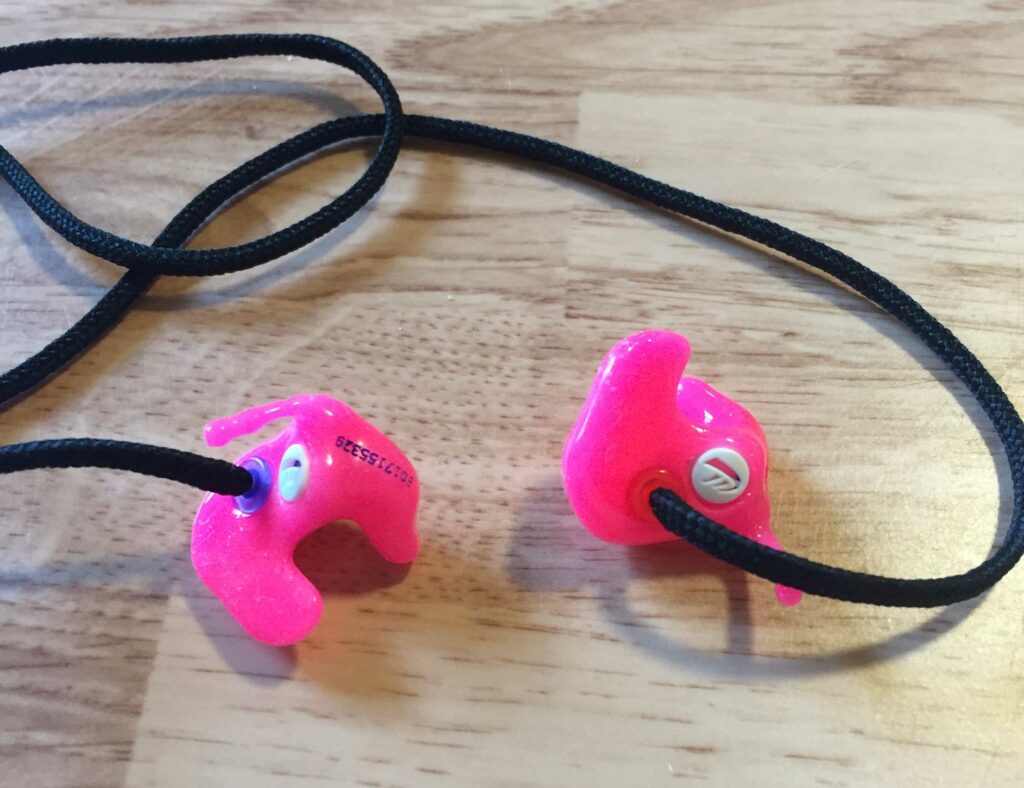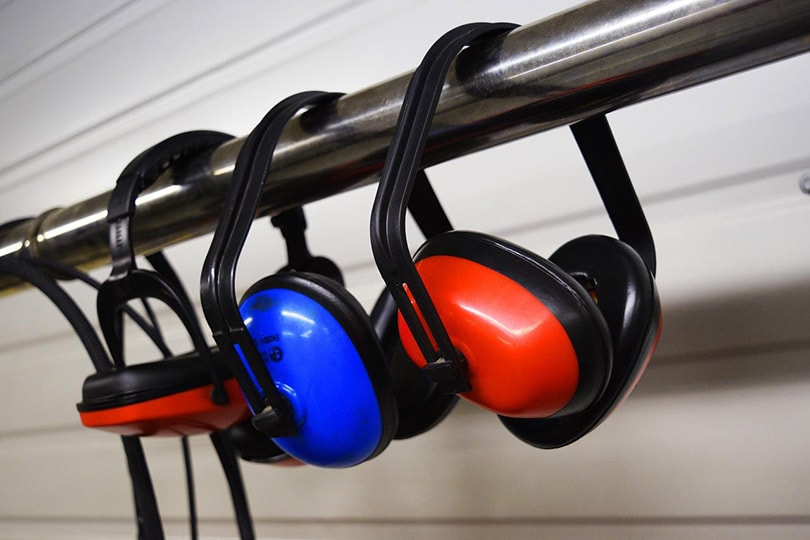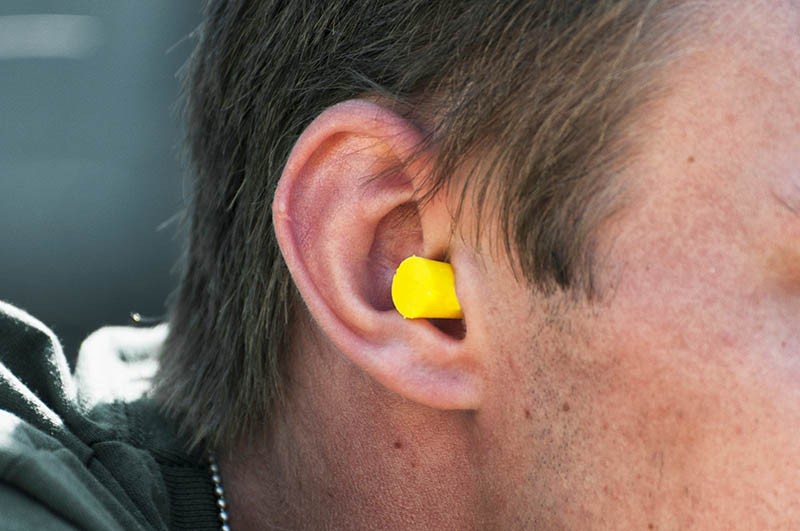5 Types of Ear Protection: Key Differences & Best Uses
-

- Last updated:
Health professionals and public service announcements often preach about the importance of ear protection for specific situations. Failing to protect your ears during periods of intense noise can cause interim and permanent hearing damage. But earplugs can be a chore to use, and some types of ear protection are uncomfortable or even painful. Many people can’t seem to get the little foam earplugs to work right. The good news is that there are multiple different types of ear protection for different people and different situations.
Here are five types of ear protection to choose from, including some tips on how to pick the one that is right for you. Good ear protection can make the difference between sharp hearing and poor hearing later in life, so it is important to focus on the details for each.
The 5 Types of Ear Protection
1. Foam Earplugs

Foam earplugs are some of the most common forms of ear protection. These are small buds that can be bought for very low prices. You squish them with your fingers and stuff them into your ears. The foam then expands to fill your ear canal and block any noise trying to get in. Foam earplugs are what most people think of when you hear the word earplug. They are usually yellow or orange and are designed to be worn for a day and then thrown away.
Foam earplugs have some downsides. They are not permanent, so you have to buy a lot of them if you need to use them frequently. They are also ineffective for people with small ear canals because they often can’t condense small enough to get to an effective depth in the ear canal.
- Affordable
- Plentiful
- Effective and easy to use
- Disposable
- Not great for people with small ear canals
- Hard to take in and out regularly
2. Pre-Molded Earplugs

Pre-molded or reusable earplugs are very similar to foam earplugs except they are made from rubber or silicone so that they can be reused. These earplugs are more rigid and do not need to be squished and rolled to put into the ear. These earplugs come in a variety of different shapes, sizes, and materials to fit most ears. However, some people still struggle to find earplugs that comfortably fit their ear canals. Pre-molded earplugs are affordable and bridge the gap between foam earplugs and earmuffs. They are permanent, washable, and easy to use while still being small and portable.
- Rigid earplugs
- More permanent than foam
- Washable and portable
- Affordable
- Won’t work for some people’s ears
- Not all configurations are comfortable
3. Musicians’ Earplugs

Musicians’ earplugs serve two purposes. First, they work to reduce noise levels for a performer like any other form of ear protection. Musicians are often subjected to loud sounds on a regular basis, sometimes on a daily basis. Without proper protection, musicians can quickly lose their hearing. However, musicians also need to be able to hear what is going on in order to perform and stay in rhythm. That is why musicians’ earplugs are designed to specifically let sound flow through them with as much clarity as possible while still dampening the harmful noise levels.
Other types of ear protection muffle sound and distort the quality. Musicians’ earplugs work by evenly reducing the sound across the board in a very particular way that preserves sound quality while also reducing noise levels. These earplugs are also great for anyone who frequently attends music events. You can still listen to the music without damaging your hearing in the long term.
- Still lets even sound quality through
- Has good noise dampening ability
- Perfect for musicians or music enthusiasts
- Expensive
4. Canal Caps

Canal caps are similar to earbuds, except the tips are attached to a band. This band goes behind the neck or over the top of the head. Canal caps allow people to quickly take out and put in earplugs without losing them. The tips of canal caps can either be foam or pre-molded. There are different types of tips available to match different types of ears and different noise levels.
Canal caps are great for people who work in an environment where loud noises are common but not constant. Say you work with a lawnmower. When the mower is on, you can put canal caps in, but when you shut off the mower to talk to a coworker or customer, you can quickly take them out and they will stay around your neck without any issues.
The cons are that canal caps are not as customizable or form-fitting as certain types of earplugs. They are more of a one size fits all kind of deal.
- Convenient
- Perfect for people who work in a loud environment
- Hard to lose but easy to put in
- Not form fitting
- Not the best effectiveness
5. Earmuffs

Earmuffs are a type of ear protection that go completely over the ears. They sit on top of your head, similar to a pair of over-the-ear headphones. Earmuffs are great because they generally fit everyone. They are hard to penetrate and are easy to take on and off. Earmuffs typically have very high noise reduction ratings. They are also permanent, so you can use them over and over again for things like the shooting range or sporting events.
The downside to earmuffs is that they are a little bulky, so you have to carry them to where you are going. They take up more space than earplugs. They are also more expensive than most earplugs.
- High noise reduction
- Easy to put on and take off
- Fits almost everyone
- Reusable
- Bulky
- Pricey
When Should You Wear Ear Protection?
You should plan on wearing ear protection any time you are expecting to experience periods of prolonged noise. If you can anticipate when you might need to plug your ears, you should wear ear protection. Hearing damage can start at sounds above 70 decibels. Rapid hearing damage can start at 100 dB and beyond. If you know you will experience these types of noise levels, you should anticipate ear protection.
- Concerts
- Fireworks
- A trip to the gun range
- Professional sporting events
- Motor racing
- General construction
- Outdoor airport work
- Road work
- Military work
- Lawncare/mowing
If you experience any of these things, you should consider ear protection to help save your hearing for the future.

Noise Reduction Rating (NRR)
Every piece of ear protection should come with an official noise reduction rating (NRR). The NRR tells you how much sound ear protection is going to cancel out. This is an official designation reached through testing and studies. Hearing damage can begin at sounds louder than 70 decibels (dB), so you should look for NRR numbers that get you close to 70 dB or below.
For example, if you are planning on attending a concert and you have seats far from the stage, you might experience noise at 90 dB, so you should look for an NRR rating of 20 or more. If you frequently work in an environment with noise levels at or exceeding 100 dB, you will likely need some robust ear protection with an NRR rating of 30 or more. These numbers can help you determine how much protection you are getting so you can pick one that is going to best protect you in your individual environment.
What Type of Ear Protection Should You Wear?
Choosing the right ear protection comes down to two important questions. First, what are you using the ear protection for? Second, does the ear protection fit? Not everyone needs custom molded earplugs or expensive earmuffs. Some people only need a pair of earplugs for an air show or a concert. If you only need earplugs once in a blue moon, you can get away with affordable disposable options. However, if you use earplugs regularly, you might want to invest in something more permanent, like noise-canceling earmuffs.
The ear protection also has to fit properly. If you cannot find buds or plugs that fit in your ear properly, you might want to invest in earmuffs. If earmuffs make your head hurt, you might want to get some pre-molded plugs. Ear protection is only effective if it fits properly.

Proper Fit Is Key
The most important factor in any choice of ear protection is a proper fit. In order to work, ear protection has to fit. If there are any gaps, then the sound-dampening ability will be severely hampered, leading to potential hearing damage. Whether you are just using cheap foam plugs for a single concert or working on a jackhammer every day, your ear protection has to fit. If it doesn’t fit, it won’t be comfortable and it won’t be something you will wear.
Conclusion
There are a variety of different types of ear protection that are all designed to help keep your hearing safe. There is ear protection for professionals, casual concertgoers, race fans, and more. Choosing the right ear protection is about determining how often you need to use it and finding one that fits your ears perfectly. Ear protection can help keep your hearing sharp as you age by preventing consistent damage from occurring.
Featured Image Credit: Sevenstock Studio, Shutterstock
Contents

